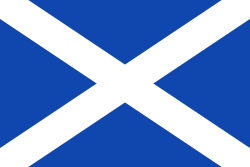
 Official flag of the Autonomous Community of the Canary Islands. Flag ratio: 2:3
Official flag of the Autonomous Community of the Canary Islands. Flag ratio: 2:3
 Version with Coat of Arms (not legislated). Flag ratio: 2:3
Version with Coat of Arms (not legislated). Flag ratio: 2:3

The flag of the Canary Islands , in Spain, is a vertical tricolour of three equal bands of white, blue, and yellow. The state flag includes the coat of arms of the Canary Islands in the central band; the civil flag omits this. The designs were made official by the Statute of Autonomous Community of the Canary Islands (Organic Law 10/82) on 16 August 1982.








